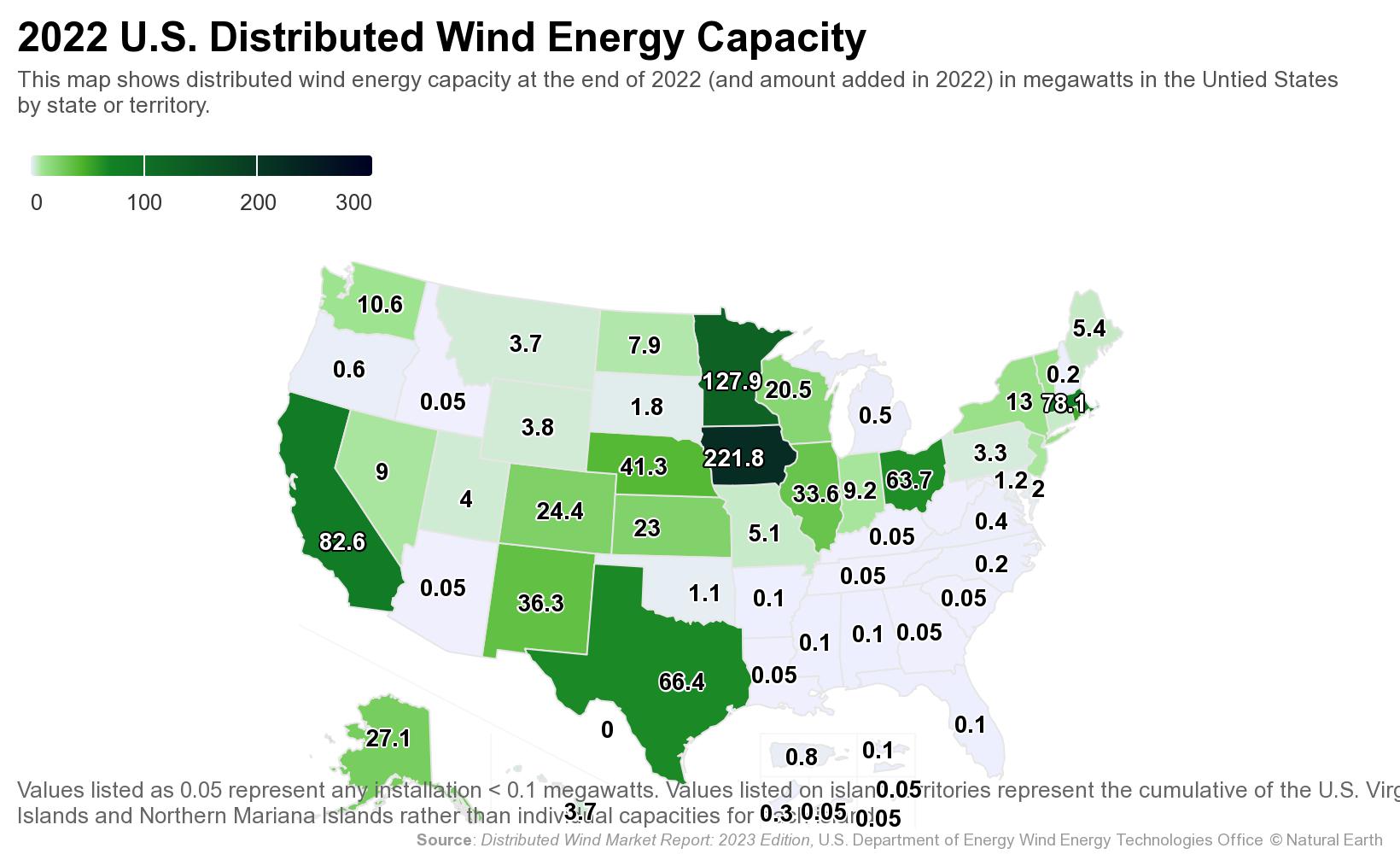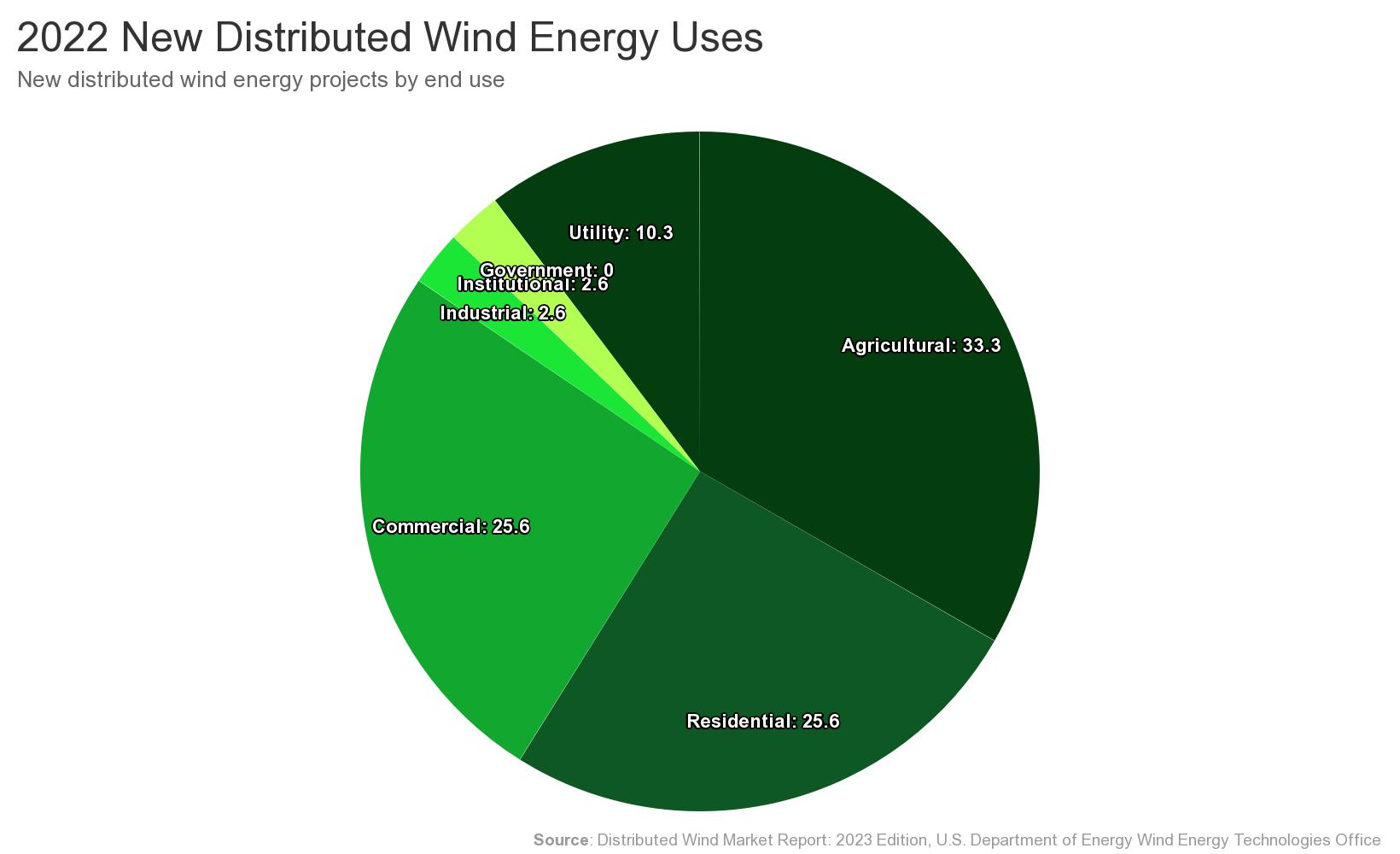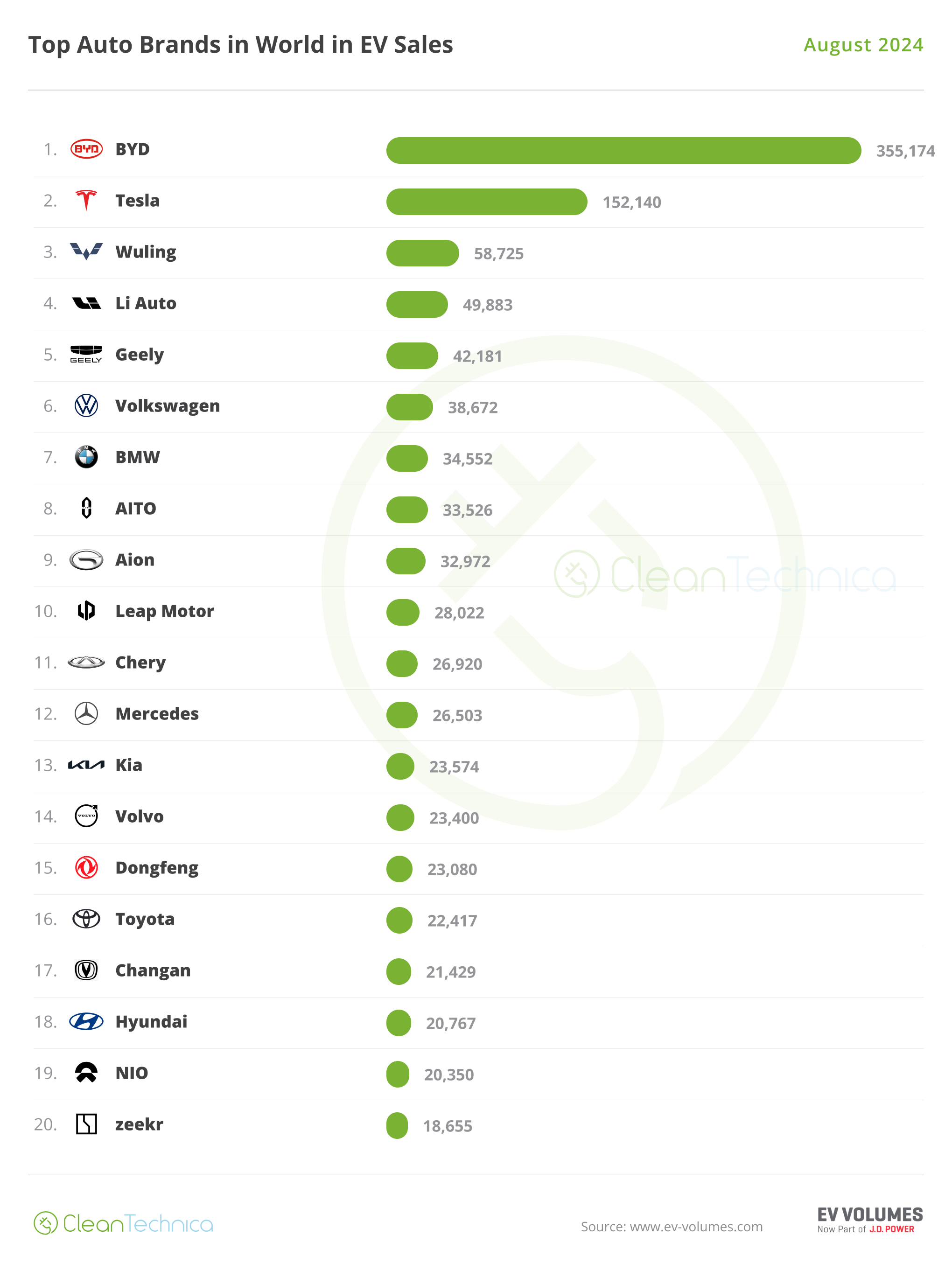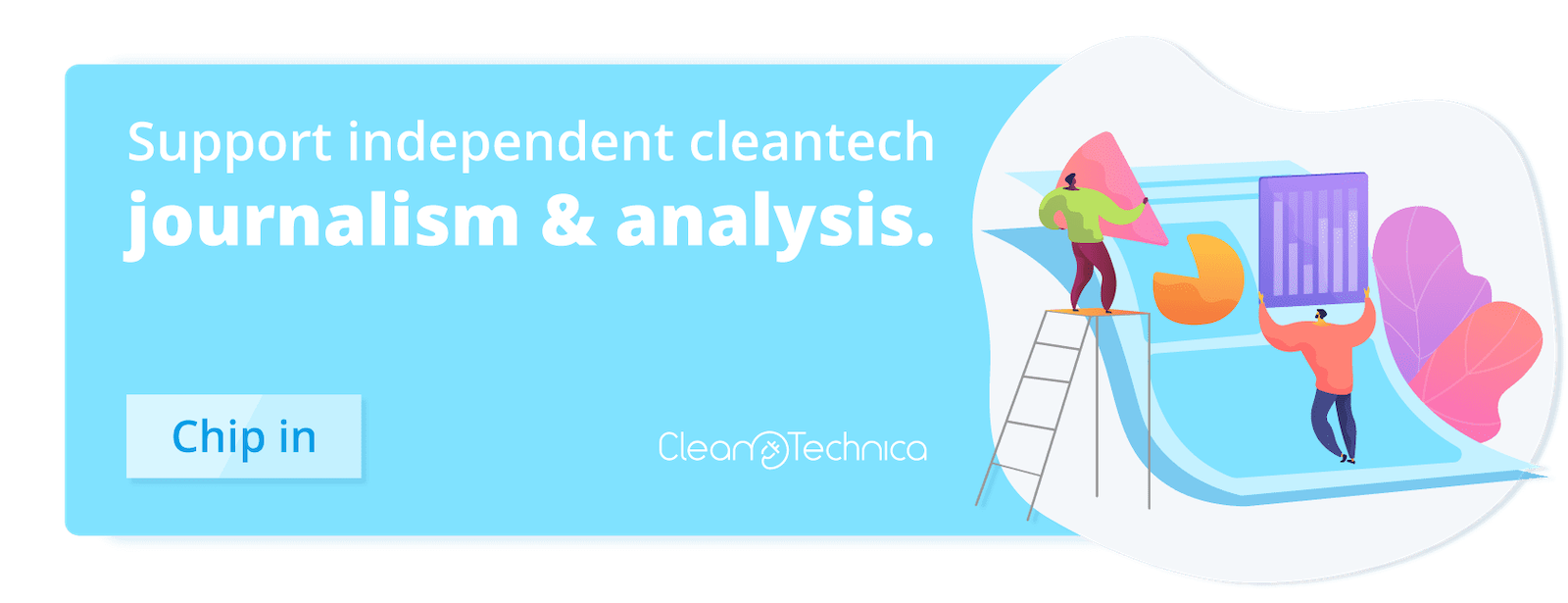
Brush up on your distributed wind knowledge! The following are some key points and fun facts about the U.S. distributed wind market. This article is part of the Energy.gov series highlighting the “Top Things You Didn’t Know About Energy.”
10. Distributed wind power is used at or near where it is generated, as opposed to wind power from wholesale generation, where power is sent to consumers via transmission lines and substations. Employed by households, schools, farms, industrial facilities, and distributed energy providers, distributed wind doesn’t only refer to small-scale turbines; it includes any size turbine or array of turbines that generates power for local or on-site use.
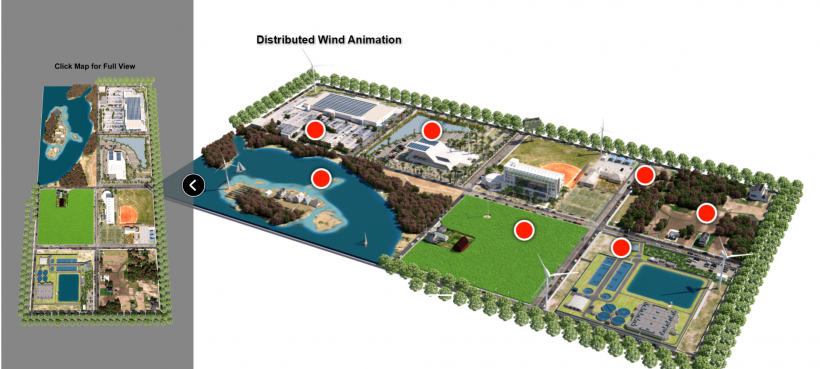
Explore the full, interactive, 3D animation on distributed wind energy case uses or read the text version.
9. People have used wind energy for more than 2,000 years to pump water and grind grain. In the 19th century, wind-powered water pumps made life possible in arid regions of the United States and Australia by tapping and bringing water to the surface from deep aquifers. Between 1850 and 1970, more than six million small wind turbines were installed in the U.S. alone, primarily for water pumping. Read more about the history of wind energy.
8. You can find wind turbines used in distributed applications all across the United States, with 90,000 wind turbines across all 50 states, the District of Columbia, Puerto Rico, the U.S. Virgin Islands, and Guam. From 2003 to 2022, US-distributed wind turbines reached a cumulative installed capacity of 1,104 megawatts.
7. There are many different types of distributed wind consumers, including agricultural, residential, industrial, commercial, governmental, institutional, and utility. Different turbines are deployed to meet the specific needs of each consumer. Agricultural and residential customers make up 59% of all distributed wind projects in 2022, but only 1% of the installed capacity in 2022 because they tend to use small turbines. Conversely, utilities, which tend to use larger turbines, account for 10% of projects but make up 78% of the installed capacity added in 2022.
6. Some distributed wind projects use multimegawatt turbines to power manufacturing facilities and other industrial plants, like California’s Anheuser-Busch plant that uses an 80-meter wind turbine named Bud Light and a 91-meter wind turbine named Budweiser to help power its brewery, collectively providing 4.1 MW of capacity.
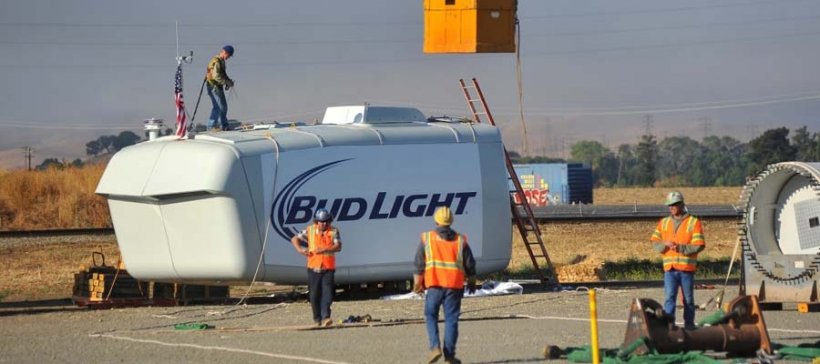
The construction of “Bud Light,” Anheuser-Busch’s multimegawatt, 80-meter wind turbine located in California.
5. Faster wind speeds mean more electricity. Wind speeds at 30 meters above the ground–an average height for distributed wind installations–can be found across the country. Check out this residential-scale wind resource map to see how strong the winds are in your area.
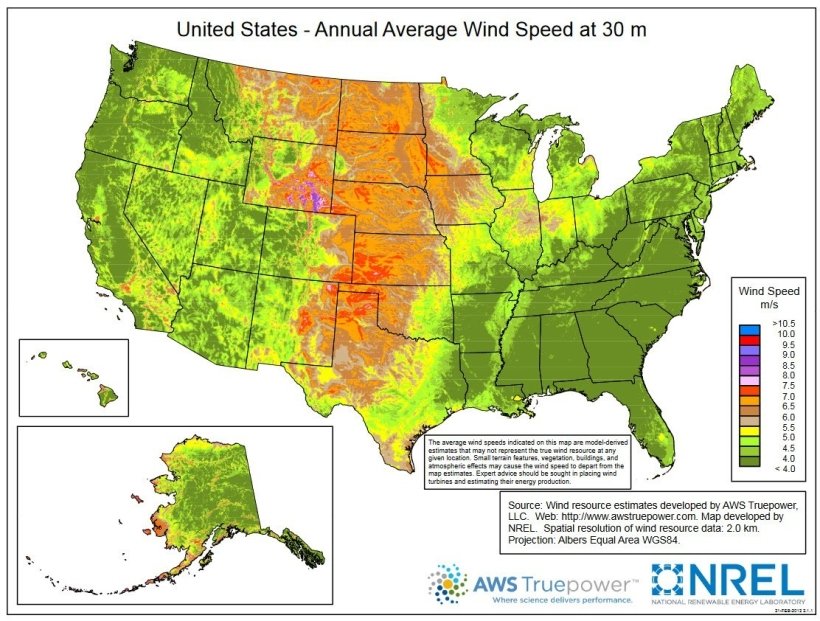
This map shows the predicted mean annual wind speeds at a 30-m height, presented at a spatial resolution of 2 kilometers that is interpolated to a finer scale. Map from the National Renewable Energy Laboratory via WINDExchange.
4. Reducing utility bills and hedging against potentially rising electricity rates are common reasons for installing distributed wind. In addition, many utilities compensate the distributed wind (or other generation) owner for excess energy generated that gets returned to the grid—a practice called “net metering.”
3. As the distributed-wind marketplace matures, third parties are providing certification of small and medium wind turbines to ensure turbines perform as advertised. The Bergey Excel 15 wind turbine achieved certification in 2021 and the Skystream 3.7 turbine was re-certified in 2023, bringing the total number of U.S. certified small wind turbine models in June 2023 to nine. The U.S. Department of Energy encourages consumers who are interested in purchasing small wind turbines to buy ones that are certified to the AWEA 9.1-2009 or ANSI/ACP 101-1 standard. It should be noted that wind technologies must be installed in specific wind resources to operate as intended.
2. Distributed wind is a homegrown industry that strengthens the domestic economy. Supply chain vendors provide the mechanical, electrical, tower, and blade components for small wind turbines. In 2022, U.S.-based manufacturers sold 1,745 small turbines, representing a $14.6 million investment. U.S.-based small wind turbine manufacturers favor U.S. supply chain vendors which are comprised of hundreds of manufacturing facilities and vendors that support jobs in manufacturing, retail, construction, and maintenance.
1. Distributed wind contributes to the growth of U.S. exports. Since 2012, over 72 MW of U.S. small wind turbines have been exported to at least 26 different countries representing a value of over $420 million.
Learn More
By Liz Hartman, the Communications Lead for DOE’s Wind Energy Technologies Office, Energy.gov.
I don’t like paywalls. You don’t like paywalls. Who likes paywalls? Here at CleanTechnica, we implemented a limited paywall for a while, but it always felt wrong — and it was always tough to decide what we should put behind there. In theory, your most exclusive and best content goes behind a paywall. But then fewer people read it! We just don’t like paywalls, and so we’ve decided to ditch ours. Unfortunately, the media business is still a tough, cut-throat business with tiny margins. It’s a never-ending Olympic challenge to stay above water or even perhaps — gasp — grow. So …

